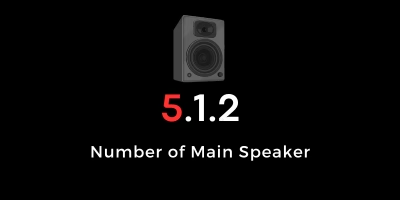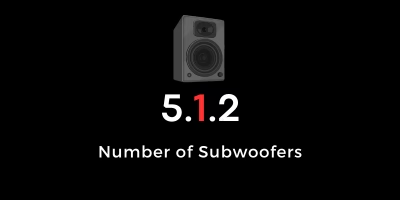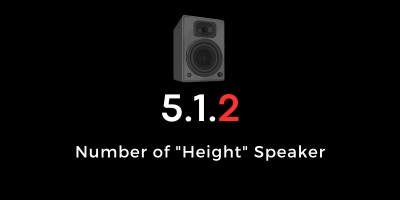Home Theater
A home theater system is designed to replicate the experience of watching movies in a cinema right in the comfort of your own home, featuring a combination of high-quality audio and visual components such as a large screen or projector, surround sound speakers, a receiver that processes audio and video signals, and streaming devices or media players for content delivery; this setup immerses viewers in stunning visuals and rich soundscapes, transforming ordinary movie nights into extraordinary cinematic experiences.
Your space, your way
Whether you have a dedicated theater room or you want an exceptional movie theater experience in your family room there are solutions to meet your needs.


What Do the Numbers Mean?
The first number of a speaker system represents the number of normal-range speakers. These will play bass, mid-range, and high frequencies. They’re meant to play sounds that are “level” with your ears when you’re seated.

The second number (ex: The “1” in 5.1.2) of a speaker system represents the number of subwoofers you’re using. While it is most common to see a 1, which means there is one subwoofer in the setup, most AV receiver units can accommodate 2 subwoofers, which means you can add a second one if you want to take the bass to the next level.

The third number (ex: The “2” in 5.1.2) of a speaker system represents the number of “height” speakers above your head.

Height speakers are usually located in the ceiling of the home theater room, but they may also be upward-firing speakers. Having them literally coming from above you is a huge boost to the cinema experience and if you can accommodate them.
An additional point is that when 2 channels are added to the normal 5.1-channel you can experience Dolby Atmos (What is Dolby Atmos? — Keep reading below). The standard Dolby Atmos configuration requires at least a 5.1.2 channel system.

Dolby Atmos takes Dolby’s traditional 5.1 and 7.1 surround sound setups a step further by adding a third, overhead dimension. You’re no longer constrained to a stereo system or standard six- or seven-channel arrangement. With Dolby Atmos, you experience an auditory atmosphere, as the name implies, and are encompassed by scenic sounds by your equipment bouncing sounds off your ceiling. The end result: an environment that more accurately represents how we experience sound.
The defining feature of Dolby Atmos is its configuration of audio objects. Sounds are no longer limited to their respective channels. Since Atmos’ introduction, audio is interpreted and recreated as objects. Think of each sound as a floating orb in space: it’s not limited to vertical or horizontal movement. That sound can float along any plane.




What about soundbars?
The right soundbar in the right environment can deliver a near theater experience and the leader in this market is Sonos.
Sonos delivers a seamless and immersive audio experience that syncs with your TV or streaming devices, creating a true cinematic effect in your room. The Sonos Arc and the new Arc Ultra, can support spatial audio for movies and TV shows for a theater-like experience.

